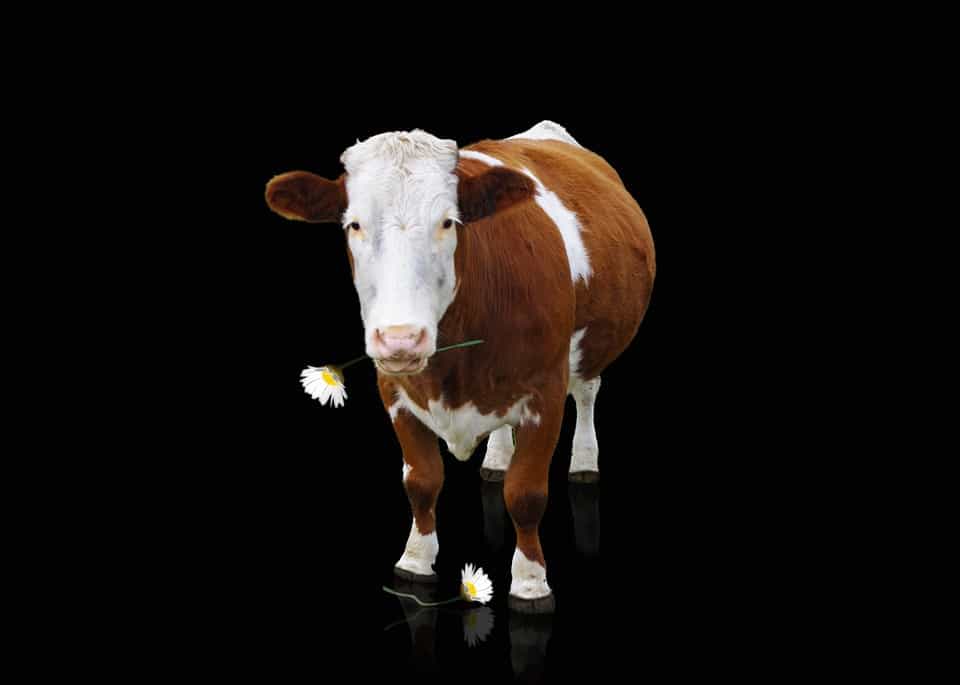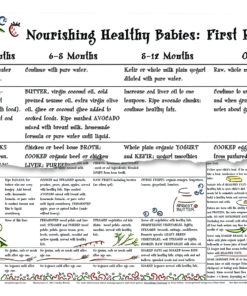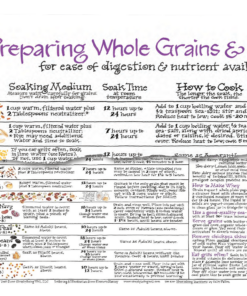These days, most people agree that yogurt is a health food, if only for the probiotics—or beneficial bacteria—it contains. However, the yogurt at the supermarket may not deliver the health benefits you think it does. So remember that the next time you toss fat-free Greek-style yogurt into your shopping cart, thinking you are “doing your body good.” Once again, the thing is not the thing. That is, you think you are purchasing a healthy food made from quality ingredients, one with calcium your body can use. But the yogurt you think you are purchasing is not that yogurt.
What has happened to commercially produced yogurt in recent years?
The quality of the milk used has declined. The breed of cow used by the dairy industry produces inferior milk. Even if you purchase organic yogurt, the milk used to make that yogurt most likely came from Holstein cows—you know, those cute black-and-white cows you see even on the labels of organic brands. In fact, more than 94 percent of the 9 million dairy cows in the United States are Holsteins.
Black-and-white cows are not traditionally prized for their milk. Rather than quality, this breed has been genetically bred since the 1940s to produce high quantities of milk—up to 30 percent more than their brown cousins. Breeds such as Swiss Brown, Jersey, and Guernsey have been valued for generations because of the quality of milk they produce. According to the Modern Farmer, “Today’s Holstein cow is a product of human engineering, as people have altered its genome by 22 percent over the past 40 years.”
What do Holsteins mean for you and the yogurt you are buying? Increased volume means decreased quality. Unfortunately, increased volume did not translate into an increase in quality, nor did it even perpetuate the previous standard of quality. In days gone by (prior to the homogenization of milk, which began in the early 1900s in the United States), the quality of milk was determined by the percentage of fat in it. The more fat the milk contained, the higher the quality. People knew that the greater the “cream line,” the be tter the milk, and the better for you. Yet today we rely on Holsteins, a breed that produces milk with much less fat than Swiss Browns, Jersey, or Guernsey cows.
tter the milk, and the better for you. Yet today we rely on Holsteins, a breed that produces milk with much less fat than Swiss Browns, Jersey, or Guernsey cows.
Holsteins are the American dairy industry standard. Homogenization makes it easy for the industry to combine the milk of many different herds. In effect, it levels the playing field by mixing high-quality milk with low-quality milk and evenly distributing the fat throughout. Consumers are none the wiser. If all the milk looks the same, and there is no cream line to distinguish the mediocre from the best, everyone wins, right? Or loses.
Less fat means the milk doesn’t set or “firm up” as it should. The label on the yogurt container should list only two or three ingredients: milk or cream, or a combination of milk and cream (perhaps buttermilk), and live cultures. That is all. If you read the yogurt containers in the dairy section of your supermarket—organic yogurt or not—you will find the word “pectin” on the label. Pectin is a filler. It is a “functional fiber, a structural heteropolysaccharide.” Used as a “setting agent” or “gelling agent,” pectin is a food fraction added to inferior milk to help it set. When pectin is heated with sugar, it causes thickening. Which leads me to another issue…lactose.
The presence of lactose! Yogurt is a pre-digestion process. If the milk is cultured long enough (24 hours or more), the yogurt will be lactose-free. So the addition of pectin, the setting agent, does two things. One, it sets inferior (low in fat) milk into the consistency that American consumers want (good for producers). Two, because the pectin needs the lactose to work, it ensures that yogurt-making is a short rather than lengthy process (also good for producers). This is not good for the bulk of Americans. Many are lactose-intolerant, and quick yogurt making means lactose is present in commercial yogurt unless otherwise stated on the label.
Pectin is classified as a functional fiber and can provide health benefits as a source of soluble fiber. It is a non-starch polysaccharide extracted from citrus products and can be sold as a fine powder or liquid.
One more issue on the topic of quality: you are what you eat eats! The vast majority of cows in the United States are fed grain. This is highly problematic for two reasons. One, cows are not meant to eat grain. They are meant to graze on grass. Feeding a cow grain has an impact on the quality of the milk that cow produces. The second reason: the grain fed to cows in this country is mostly soy and corn. Unless you drink organic milk, that soy and corn feed is most likely from GMO crops, as more than 90 percent of the world’s supply of soy and corn is currently genetically modified. Conventional cows, unlike grass-fed cows from organic dairy farms, are fed corn and soy. We are what we eat eats, so the GMO grains the cows eat are in the milk and milk products that we drink and eat.
Homemade yogurt to the rescue! When you make your own yogurt, you are in control of the quality of the ingredients. You can keep fillers out. You can guarantee that your yogurt is lactose-free.
Begin with the best quality milk you can find. This is fresh milk from pastured, grass-fed cows, free from the damaging effects of pasteurization and homogenization. Quality milk comes from cows that have grazed on fresh grass, the food they are meant to eat. (For more information about fresh milk and where to obtain it, see RealMilk.com or WestonAPrice.org.)
Culture this milk long and low to obtain lactose-free yogurt. That means twenty-four hours or more (long) at 110°F (low).
Homemade Yogurt
Note: If you must use pasteurized milk to make your homemade yogurt, you will first need to heat the milk to 180°F to kill any pathogens that may have grown since its sterilization (oops, pasteurization), then cool it to 110°F and proceed with the following instructions.
Ingredients
1 quart raw milk or high-quality organic whole milk from grass-fed cows, with no fillers (pasteurized okay, but never UHT)
1/3 cup or more yogurt, whey, or yogurt starter
Instructions
- Pour raw milk or pat into a saucepan. Slowly heat to 110°F on the stove. Alternately, heat pasteurized milk to 180°F and allow to cool to 110°F.
- Meanwhile, put the yogurt or whey into a thermos. When milk is warmed to temperature, pour quickly into the thermos and cap tightly.
- Hold the yogurt in the thermos for 24 hours.
Alternately, you may pour the milk into a glass jar and heat on an electric plate, in a dehydrator, or in a gas stove with the pilot light on. If you have a yogurt maker, stir and place in yogurt maker for 24 hours. Then place in glass jar and refrigerate.
For more information about the benefits of culturing dairy, as well as easy-to-follow recipes, see my book Cooking Techniques for the Gut and Psychology Syndrome Diet, Part II: Culturing Dairy, available from Selene River Press.
Photo from istock/ MarcoGovel (baby eating yogurt)




